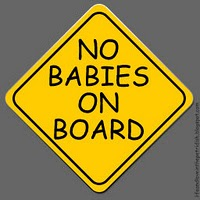California Is Aging and Shrinking, Which Portends Either Disaster or Nirvana

Declining migration and California’s falling birthrate mean fewer children in the state’s immediate future, but beyond that, conclusions about what it means for the future are mixed. Some see it as a harbinger of socio-economic upheaval, others as a prelude to a healthier, less-stressed environment.
“California’s Diminishing Resource: Children,” a study released last week by the University of Southern California and the Lucile Packard Foundation for Children’s Health, found that children under 18, who made up 33% of the state’s population at the end of the Baby Boom in 1970, will decline to just 21% by 2030. Children under 10 will drop from 17.9% to 11.4%
The birthrate has been falling in the state for years, but is now below the replacement rate for maintaining population size. Demographers consider 2.1 babies per woman the population replacement level; California declined from 2.14 in 2000 to 1.94 in 2010. The study predicted a further decline to 1.89 by 2020.
Every ethnicity showed a decline between 2000 and 2020 except for American Indians. The largest drop was among Latina and all of the groups ended up under the 2.1 replacement level by 2020.
In the past migration to California from other states and nations buoyed the state’s youth population, but immigration has dropped steadily over the years declined sharply after the 2007 financial crash.
The ramifications of California’s changing demography are just now taking shape. There could be less stress on infrastructure, a smaller tax base, a dearth of workers, less demand for large houses, fewer day care centers and a reduced chance of seeing Jackass 4.0 take up a coveted spot at the local cineplex.
Dr. Mark Lundberg, Butte County’s public-health officer, is optimistic about what lies ahead. “Our environment may benefit from a declining population,” he told the Chico News & Review. “From my public-health point of view, it is generally positive. We do not need a growing population for a country to be physically healthy.”
Others are not so sure.
As the population of children shrinks, a correspondingly increasing number of aging Baby Boomers will be retiring from the work force. Needs of the Boomers have long driven American society―from demands for maternity wards and new schools to reshaping housing needs―and now they are preparing to tap into the labyrinth of public services they helped create.
“By 2015, each newborn child will carry fully twice the weight of social and economic responsibility as a child born in 1985,” the report says.
The author, Dowell Myers, told the San Francisco Chronicle, “We're shrinking our base while we're growing our top, and that's not sustainable. . . . We're used to getting reinforcements from outside, but they're not coming.”
–Ken Broder
To Learn More:
A California Drought: Not Enough Children (by Miriam Jordan, Wall Street Journal)
Golden State Shrinking? (by Evan Tuchinsky, Chico News & Review)
California Has Fewer Kids, More Elderly (by Drew Joseph, San Francisco Chronicle)
California’s Diminishing Resource: Children (by Dowell Myers, Lucile Packard Foundation for Children’s Health) (pdf)
California Baby Bust Under Way (by Matt O’Brien, San Jose Mercury News)
California Birthrate Lowest Since Great Depression, State Data Show (by Phillip Reese, Sacramento Bee)
- Top Stories
- Controversies
- Where is the Money Going?
- California and the Nation
- Appointments and Resignations
- Unusual News
- Latest News
- California Forbids U.S. Immigration Agents from Pretending to be Police
- California Lawmakers Urged to Strip “Self-Dealing” Tax Board of Its Duties
- Big Oil’s Grip on California
- Santa Cruz Police See Homeland Security Betrayal in Use of Gang Roundup as Cover for Immigration Raid
- Oil Companies Face Deadline to Stop Polluting California Groundwater





